With a fleet of former military fighter jets, the Canadian company Top Aces supports the training of the German armed forces in several areas.
Text and photos: Emiel Sloot
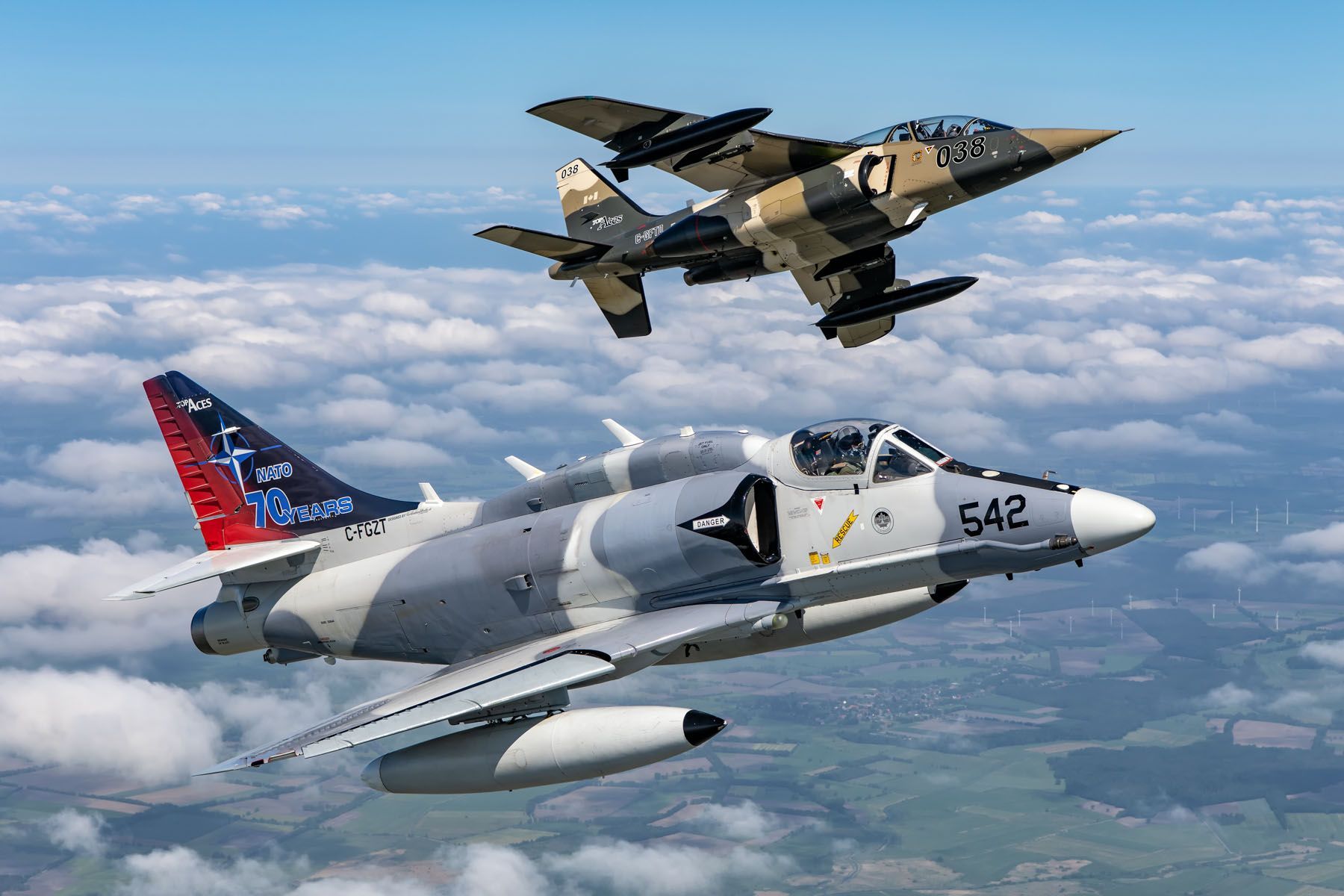
An overview
Outsourcing certain services to support defence organizations has been a common occurrence in history. Today, civilian contractors worldwide carry out a number of tasks in various areas such as aircraft maintenance, crew training and search-and-rescue. A couple of companies are even equipped with high-performance former military jets. One of these is Top Aces, a privately-owned, Montreal-based venture. Profiling as a global leader in aerospace and defence, they offer amongst others advanced adversary training (also referred to as Red Air) and Joint Terminal Attack Controller (JTAC) training services to allied forces worldwide. So far, this has resulted in a number of contracts. At Mesa in Arizona, USA, the Top Aces Corporation has recently taken on charge the first of 29 F-16A fourth-generation fighter aircraft. In 2017, a two-year contract with the Australian defence forces resulted in the deployment of three Alpha Jets to RAAF Base Williamtown. Also that year, a long-term Contracted Airborne Training Services contract was signed between Top Aces Incorporated and the Government of Canada. A similar follow-up agreement was reached with Germany in 2021.
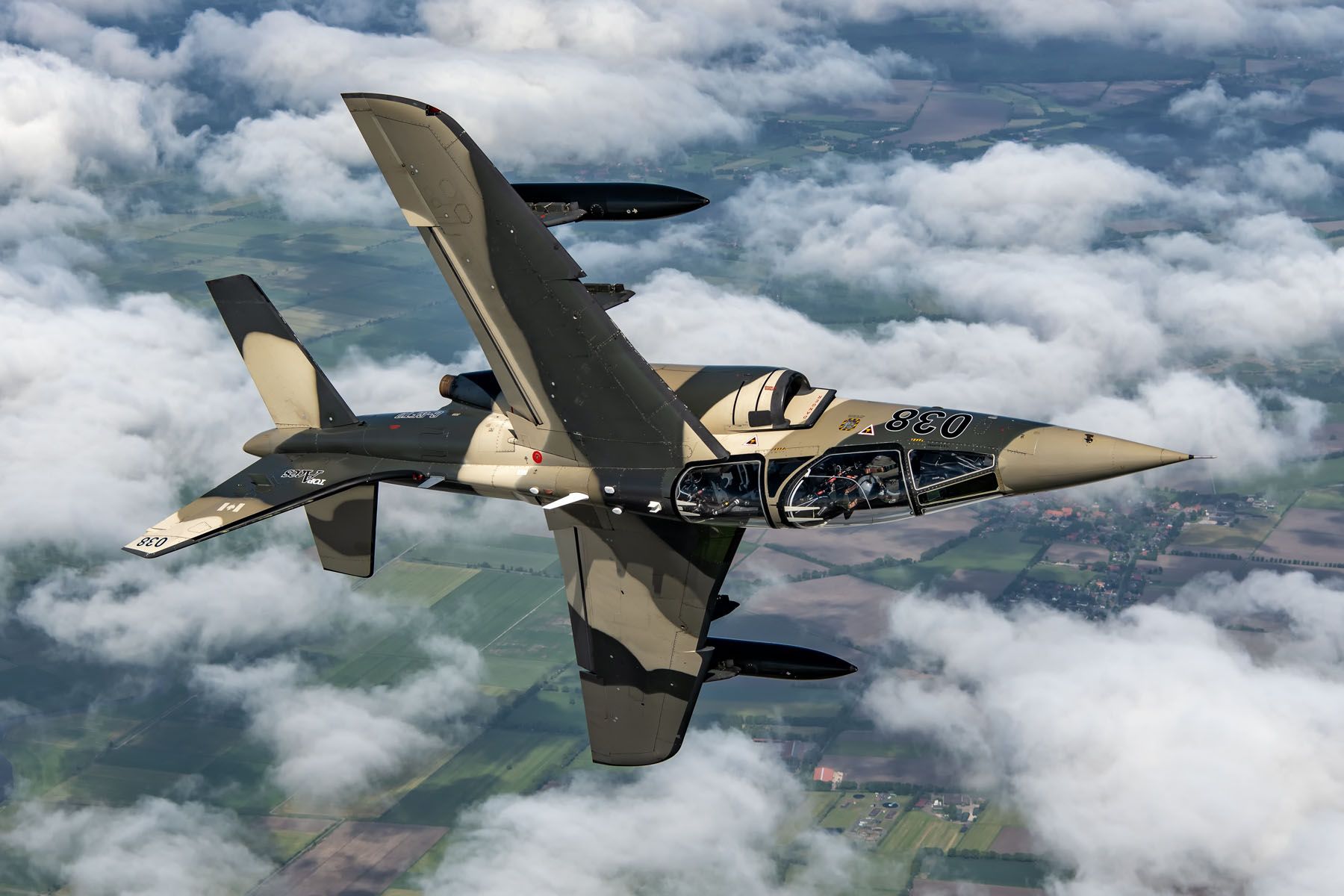
The founding fathers
How did this all start and develop? In 2000, Paul Bouchard, Dave Jennings and Didier Toussaint, all former Canadian Armed Forces CF-18 Hornet pilots, teamed up. The goal was to create a business to provide their former employer with realistic training assets, as the Canadian defence organization was looking for a cost-effective replacement for their own threat simulation squadrons. Five years later, a $ 94 million contract was signed with the Canadian Armed Forces to supply contracted combat support and adversary training. This would not only enhance the operational readiness of combat forces by delivering real-world experience while creating significant cost efficiencies, but also extend the lifecycle of military aircraft fleets.
In August 2007, Discovery Air, also a Canadian company, acquired Top Aces and renamed it into Discovery Air Defence Services (DADS). The fleet consisted of IAI 1124 Westwind and Dassault-Breguet-Dornier Alpha Jet A aircraft.
On 22 December 2017, Discovery Air transferred this particular branch to an investor group that subsequently rebranded it again as Top Aces. The parent holding is located in Ottawa and controls both the Canadian-based Top Aces Inc. and Top Aces Corp. in the USA. Today, Top Aces employs close to 500 people.
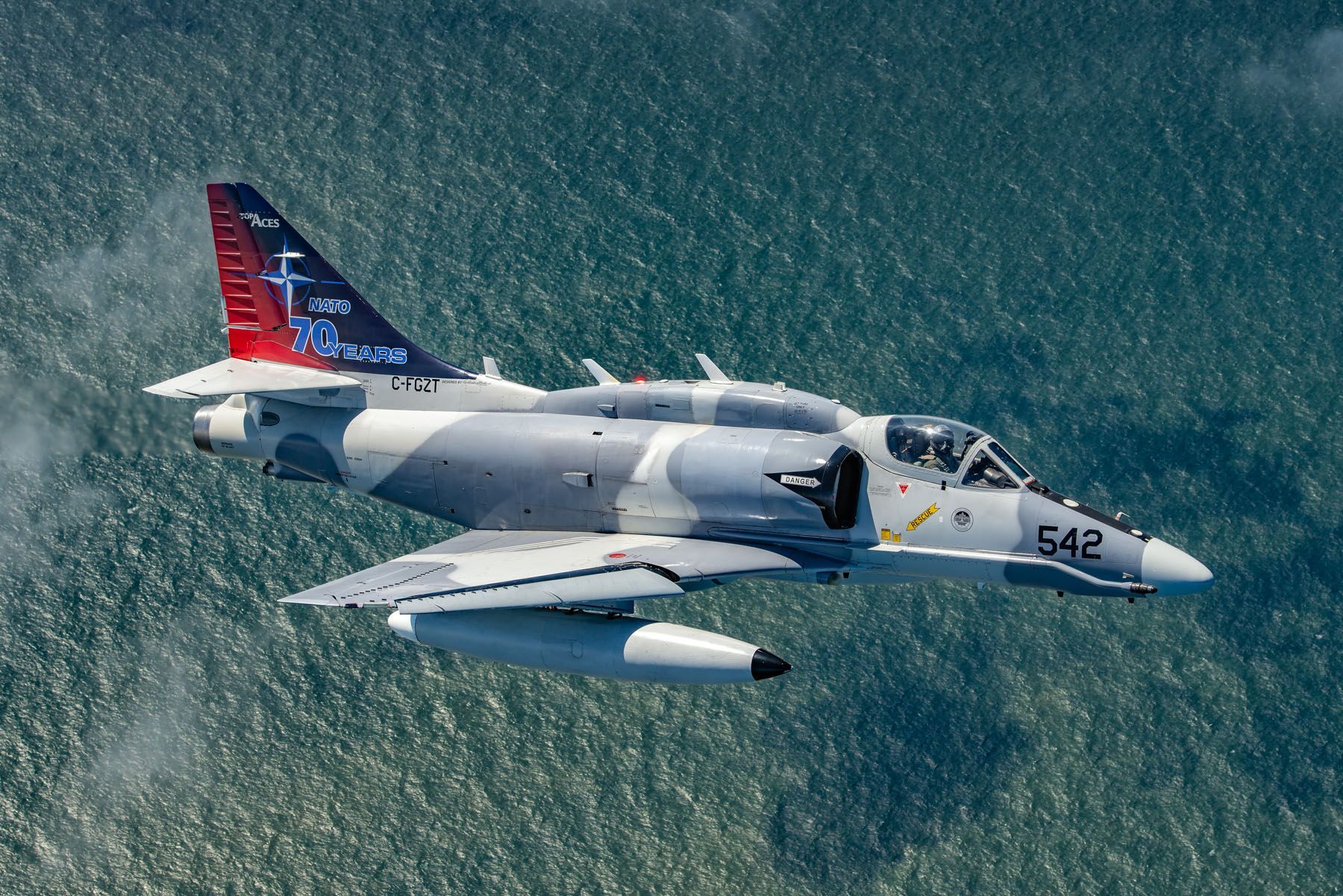
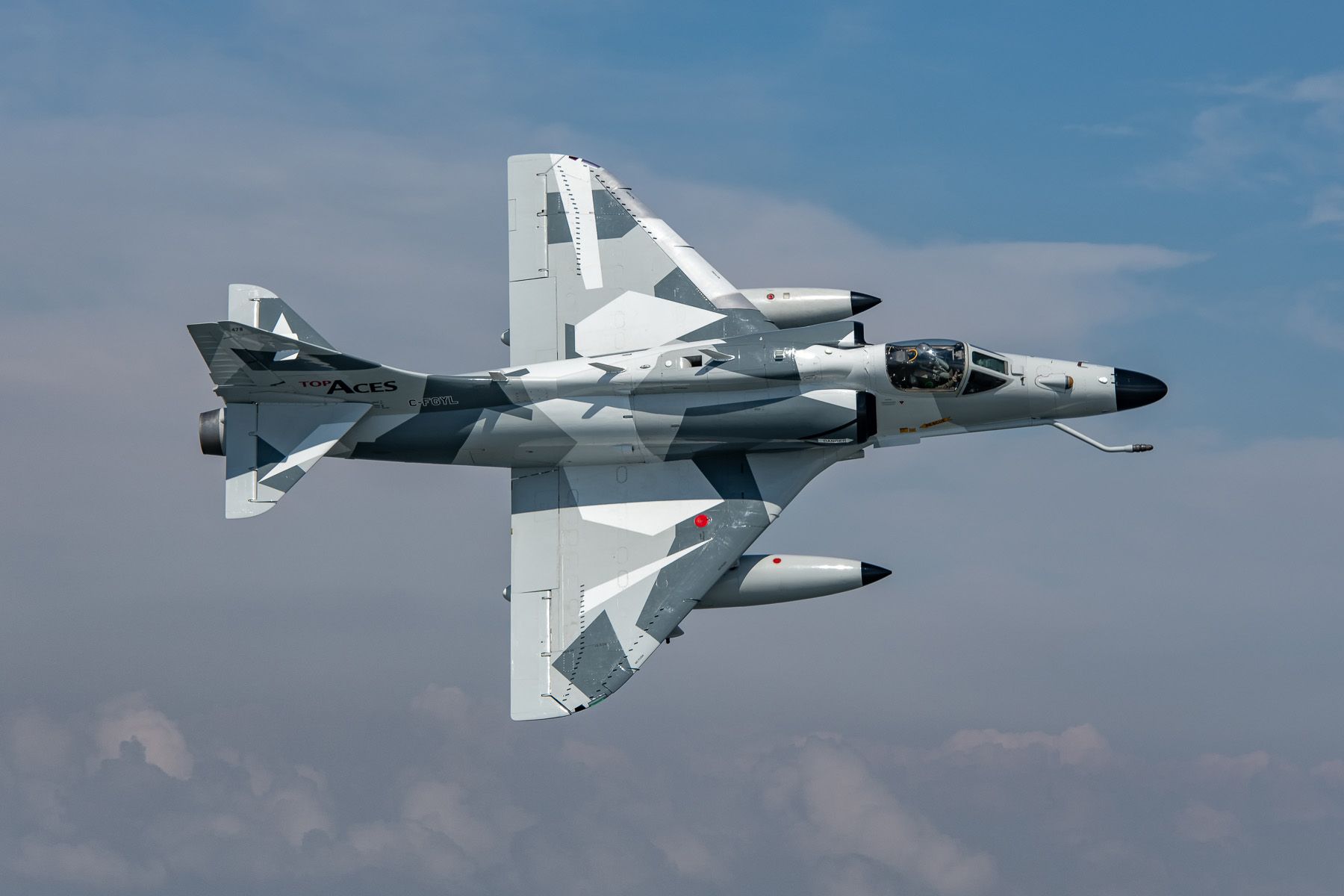
Transatlantic expansion
As a result of a five-year contract signed in 2014 with the Bundeswehr, the German Armed Forces, the company stretched their wings to Europe. Six Douglas A-4N Skyhawks were obtained for this assignment and flown to Wittmund air base, becoming Top Aces’ home base.
Choosing this location for their operations was a logical step, as civilian jets had flown out of Wittmund in support of the Bundeswehr for a prolonged time. From 1991, BAe Systems used former Danish Air Force F-100F Super Sabres for similar duties until replacing these classic century jets with A-4Ns in 2002. Discovery Air took over business in 2014 with a set of similar Skyhawks.
The contract with the Germans was renewed on 26 April 2021. Starting from 1 January 2022, the company – that was now known as Top Aces – would continue to provide a number of services. For air-to-air training, it provides ‘Red Air’ adversaries to be engaged by operational Eurofighter pilots, as well as those following the Eurofighter conversion course with the Taktisches Luftwaffengeschwader 73 ‘Steinhoff’ based at Laage air base. Top Aces can also participate in Large Force Employments (LFE) to train German Air Force planners and crews to deploy larger packages of aircraft in various roles.
In view of air-to-ground training, Top Aces does fly profiles to train Joint Terminal Attack Controllers (JTAC) in directing military aircraft engaged in close air support from a forward position. Both the German Air Force and Army as well as Special Operations Forces JTACs make use of this, and Top Aces is cleared to do live drops with practice bombs for realistic training.
To train ground-based air defence units, Top Aces aircraft act as hostile targets for practice engagements. Finally, the company provides target towing for the Bundesmarine (German Navy) for surface-to-air gunnery training, while their aircraft can also simulate threats to naval vessels, including flying anti-ship missile profiles.
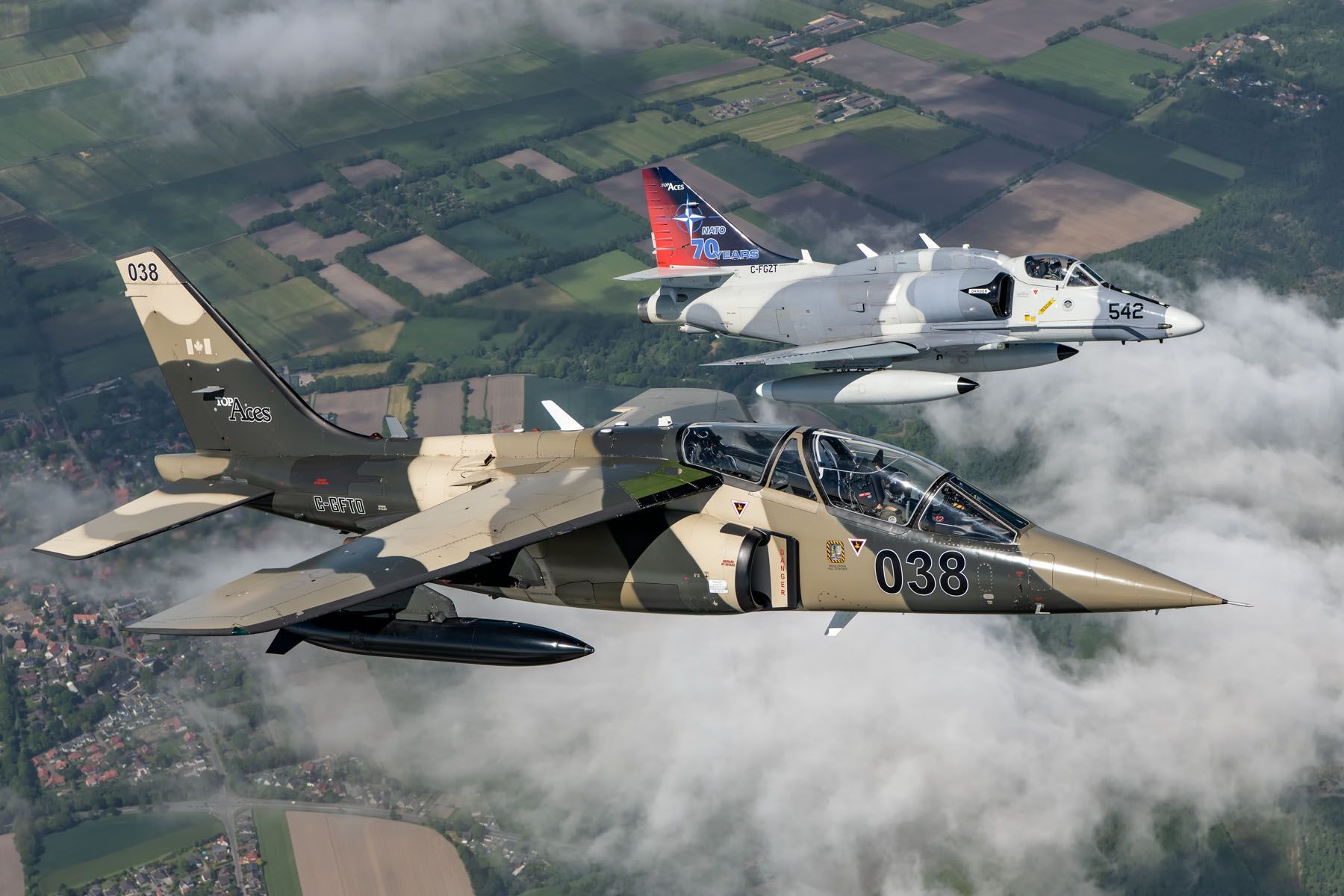
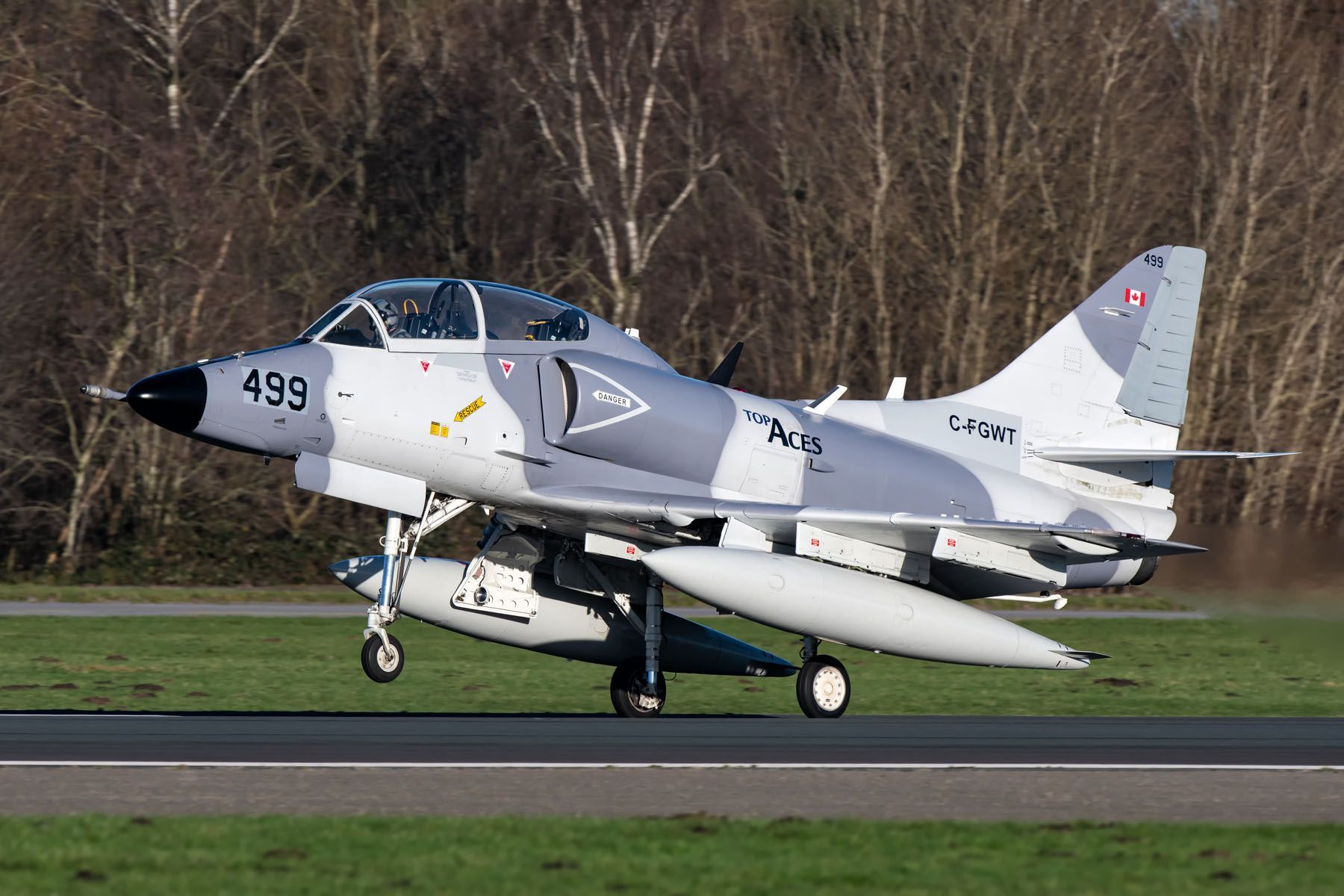
Skyhawks
Currently, the Canadian civil register lists 21 A-4N and one dual-seat TA-4J Skyhawk as being owned by Top Aces. Of these, eight A-4Ns are based in Germany. The TA-4J has also been based here for a few years, however it returned to Canada on 17 April 2024 to facilitate crew training there.
The A-4N is a version of the Skyhawk of which 117 were built by Douglas between 1972 and 1974 for service with the Israeli Air Force, that dubbed the aircraft Ayit or Eagle. After retiring from frontline duty, several aircraft found their way to civilian operators like the earlier mentioned BAe Systems and Discovery Air.
At Top Aces, the aircraft carry an Israeli-style three-digit serial number to identify the individual aircraft. These however reflect the last three digits of the aircraft’s manufacturer’s serial, rather than their previous IAF identification.
The Skyhawks fulfil a wide range of missions. A banner towing system provides target practice for German Navy anti-aircraft gunnery training. For the same client, it offers training to counter anti-ship attacks. However, the aircraft is mostly engaged in ‘Red Air’ missions, where the A-4N is the preferred aircraft of choice.
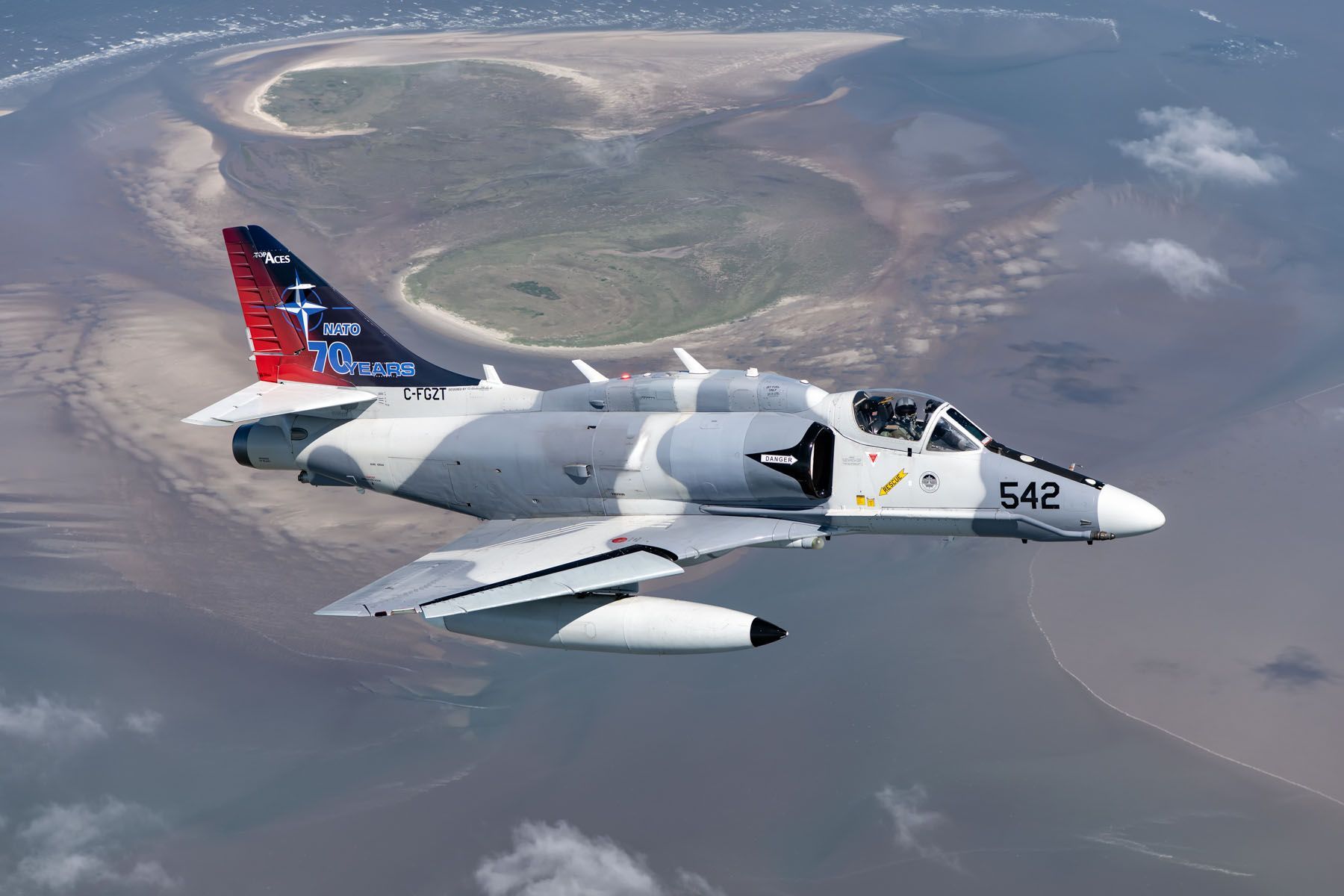
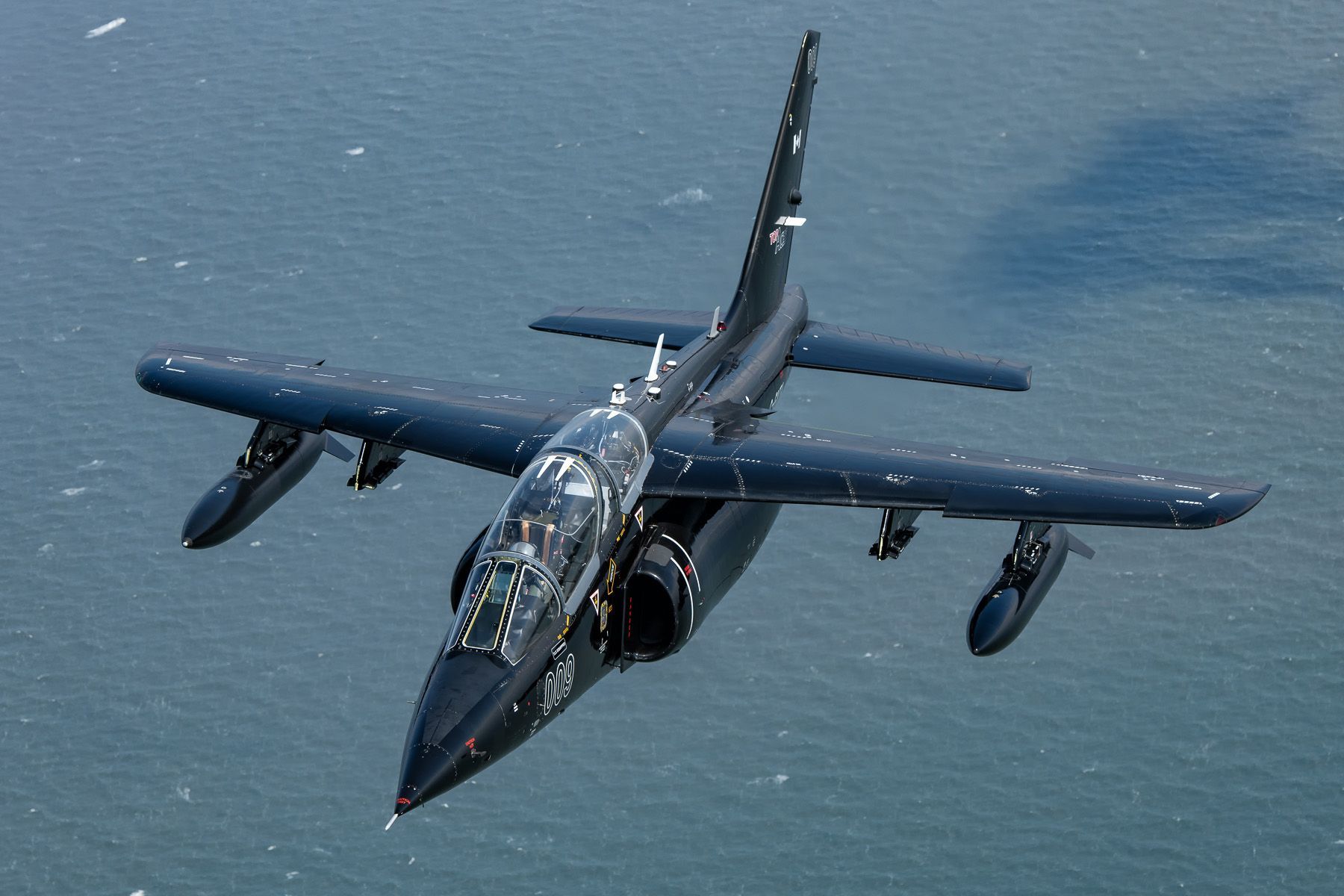
AAMS
Adversary support includes large scale coalition air exercises. Recent new systems added to the Skyhawk have effectively enhanced these operations.
In 2017, Top Aces made significant investments to develop a proprietary Advanced Aggressor Mission System (AAMS) that would allow for the use of state-of-the-art Active Electronically Scanned Array (AESA) radar and Infrared Search-and-Track (IRST) systems on the A-4N Skyhawk. The AAMS allows its aircraft to simulate the most advanced capabilities of modern-day opponents in air-to-air combat, while the AESA radar is capable for advanced air-to-air training.
Following flight testing and certification of the AAMS, all A-4Ns were modified to demonstrate this capability to the company’s customers, and the system became operational in 2021.
The open architecture of the AAMS allows for easy future integration of additional options, such as a Helmet-Mounted Cueing System (HCMS); tactical datalink communications with other aircraft and ground stations; high fidelity weapons simulation allowing accurate replication of adversary tactics; advanced electronic attack pod employment and passive RF detection capabilities; and an array of tactical functions coordinating these systems to provide a spectrum of realistic adversary effects.
The AAMS is also featured on Top Aces’ F-16s. The company took over 29 F-16A Netz (Hawk) aircraft from the Israeli Air Force to serve a contract with the US Department of Defense. The first of these were delivered to the Top Aces F-16 Center of Excellence in Mesa, Arizona, becoming the first private company worldwide to operate this type of fighter aircraft.
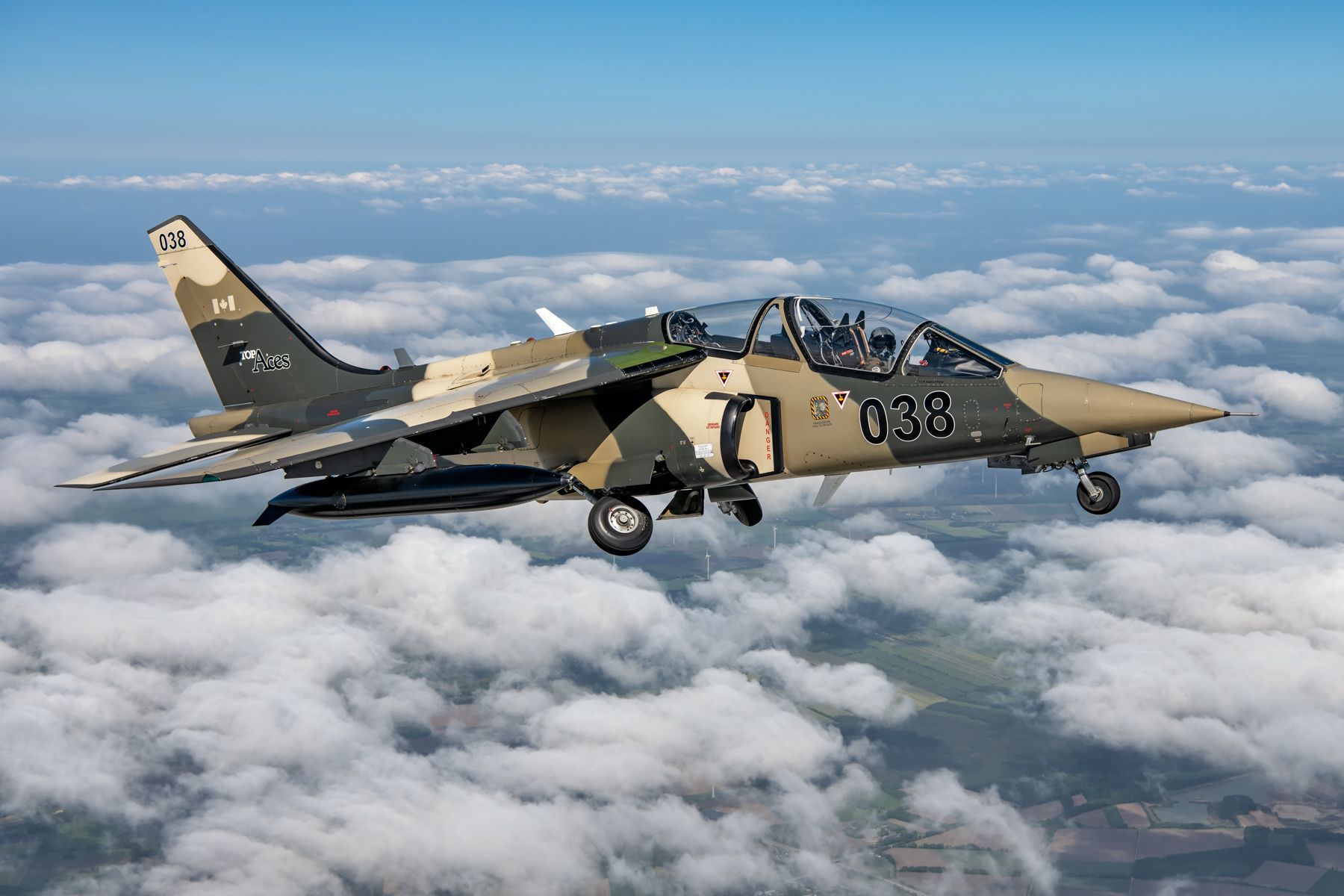
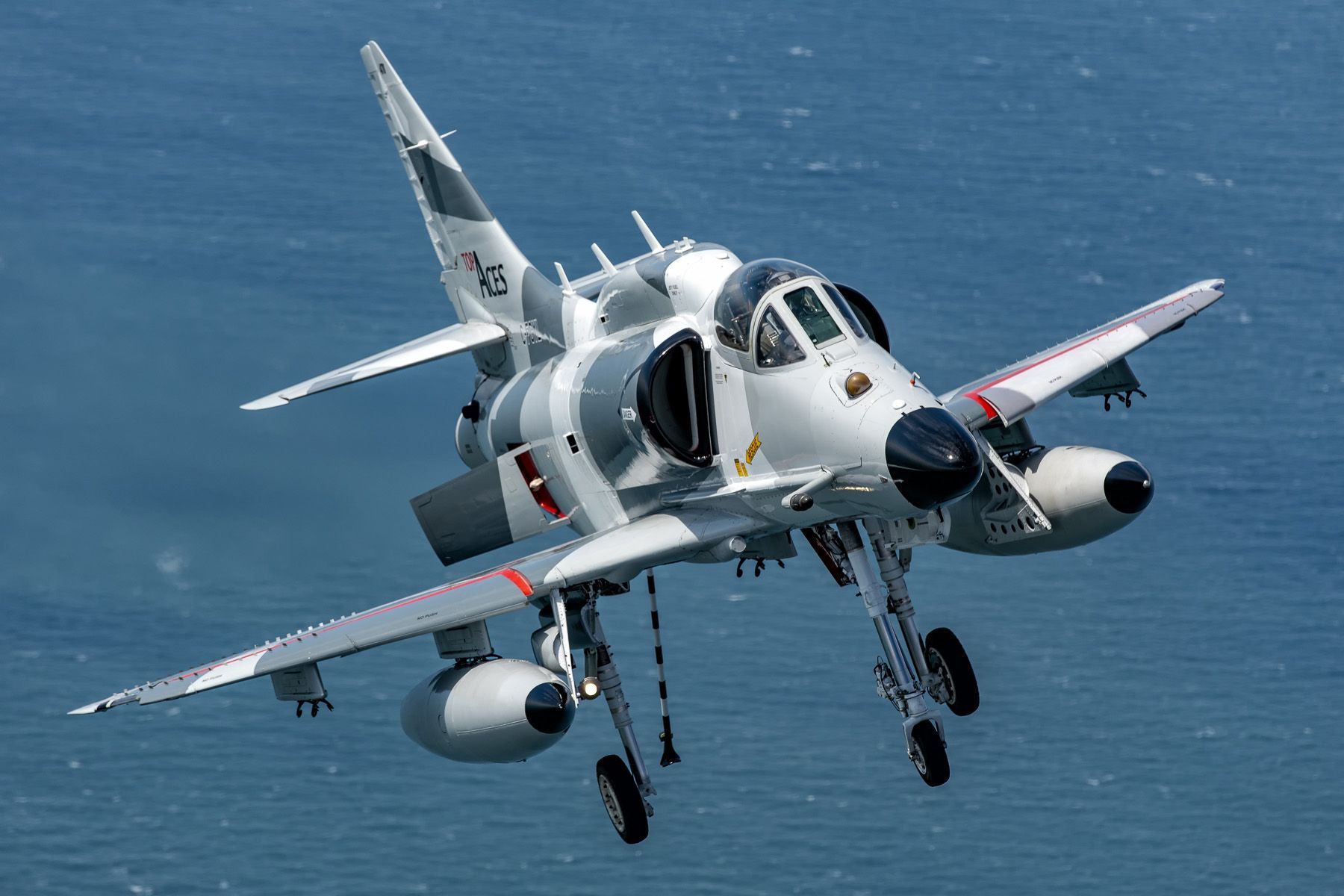
Alpha Jets
Top Aces already operated a number of Alpha Jets when the initial German contract was signed in 2014. A total of 31 Alpha Jet A light jets have been obtained over the years. These were all built by Dornier for the Luftwaffe, that gradually disposed of these aircraft in the 1990s following the end of the Cold War. A large number ended up with various air arms and other operators. Some of Top Aces’ Alpha Jets were previously used by QinetiQ, a UK-based defence technology company, while others were directly acquired from German storage.
During July 2020, Top Aces also bought 25 Alpha Jet E trainers from the Belgian Air Component in a contract worth € 9.7 million. All were shipped to Canada, and have not entered active service yet.
When the German Bundeswehr contract was renewed and extended in 2021, six Alpha Jets moved from Canada to Wittmund to be able to fly the whole mission set. The Alpha Jet is particularly used for JTAC training. For this, it can be fitted with up to two CBLS-200 dispensers that can carry four DM-18 or DM-38 practice bombs each. JTAC training missions are flown both day and night, over various army locations and ranges such as the Nordhorn firing range.
The Alpha Jet also does air adversary roles like the Skyhawk, but only in the early stages of flight training. Finally, it supports simulated threat in anti-ship missions. Target towing is not on the list of tasks, although such missions are carried out by the Canada-based Alpha Jets.
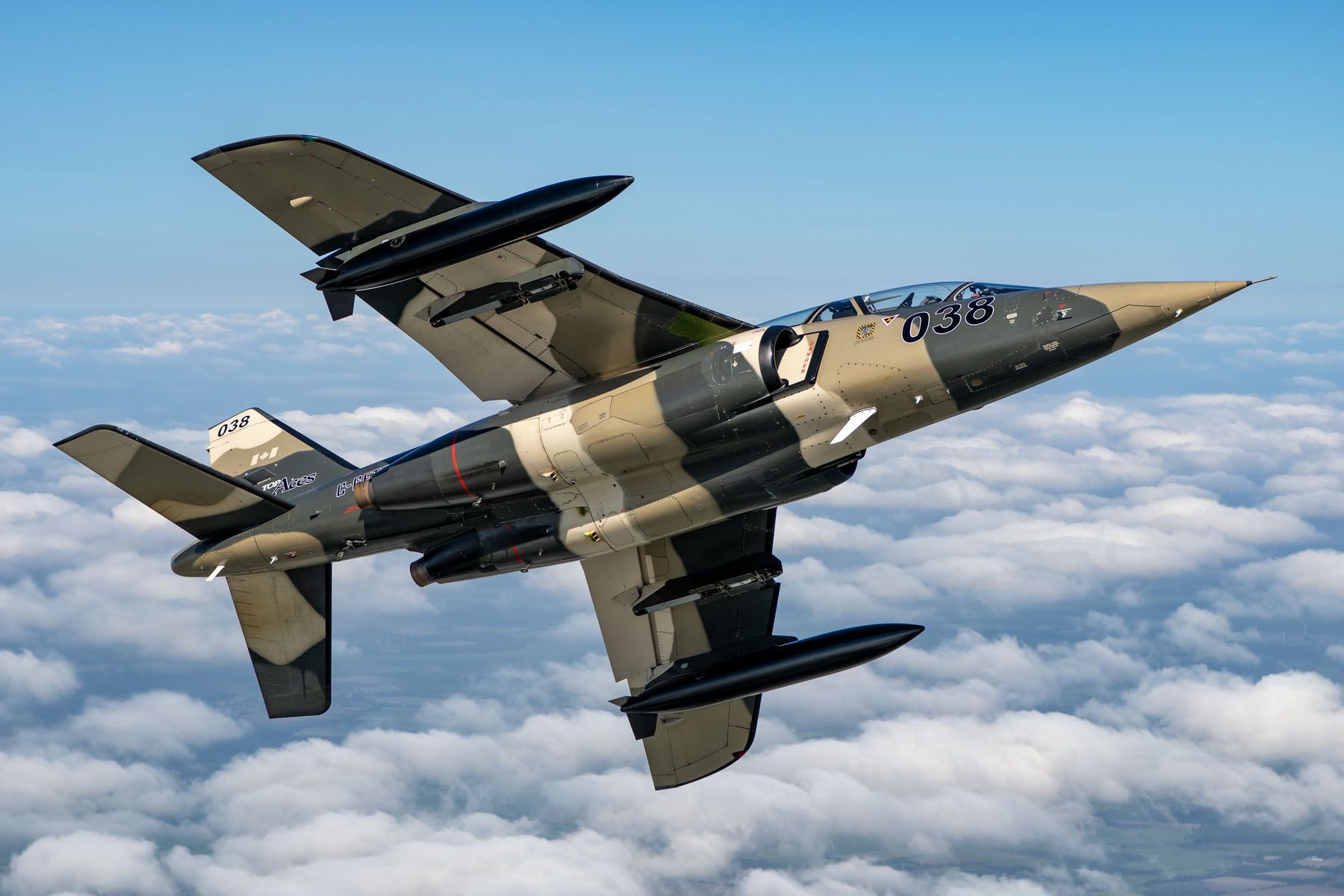
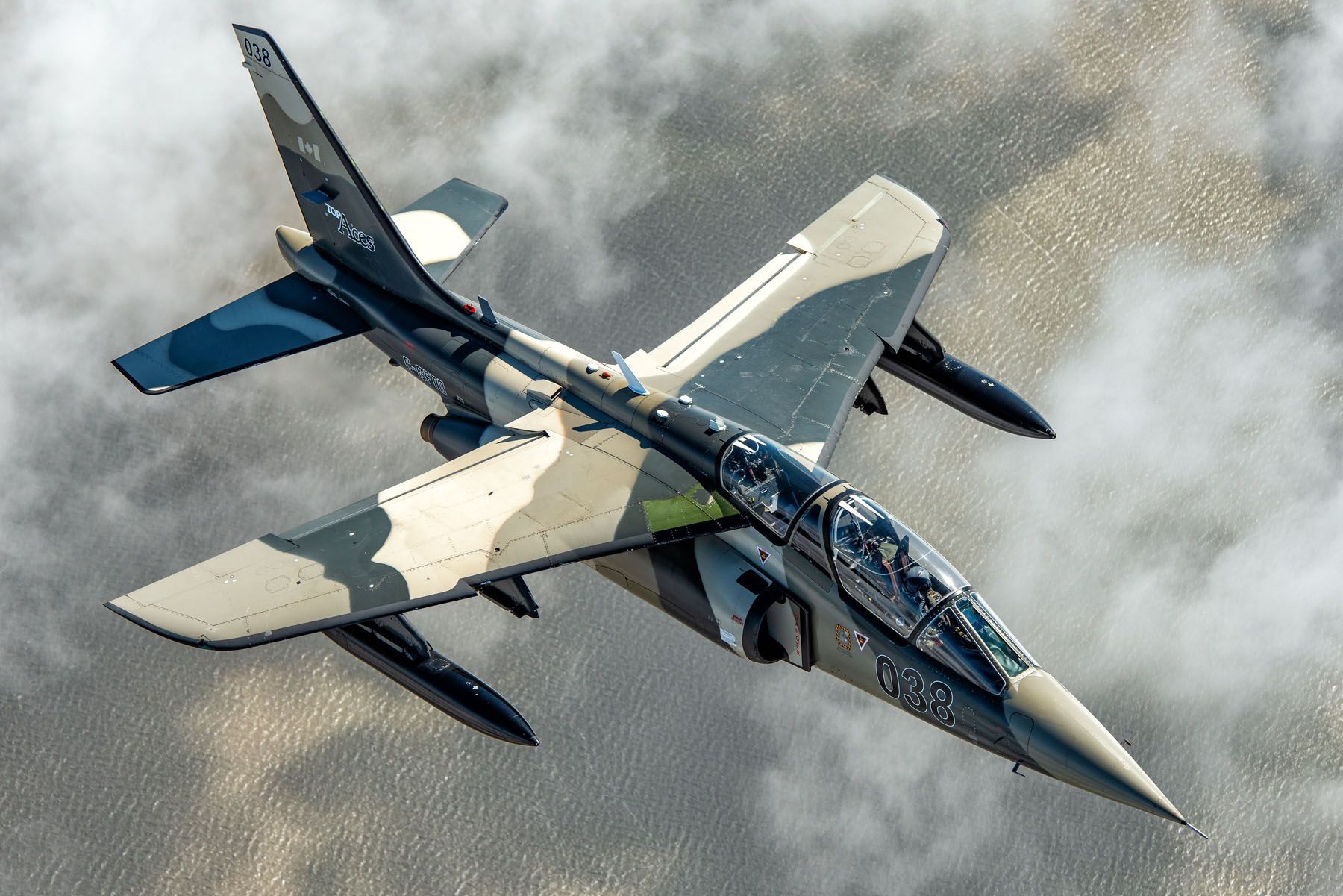
The pilots
To become a pilot with Top Aces, a military background is a must. To apply for the job, one must hold either an ATPL licence or a CPL with a valid instrument rating. A minimum of 2,000 flying hours as pilot-in-command on fighter aircraft is required, with recent experience on that category of aircraft.
Having previously flown either the Skyhawk or Alpha Jet is a valuable asset but not required. Top Aces does the conversion courses for these types of aircraft in-house. While the Alpha Jet training syllabus takes place in Canada, Skyhawk pilots have received their conversion course in Germany. To assist in this, a TA-4J dual-seat aircraft joined the fleet at Wittmund in May 2021, after it became redundant with Top Aces Corp. at Mesa. Like the A-4Ns, this is also a former Israeli Air Force aircraft. However, since additional A-4s entered the Top Aces fleet for their Canadian-based operations, the trainer was more needed back home, so it returned to Canada on 17 April 2024.
Top Aces pilots in Germany currently originate from Germany, Canada and the US. Annually, they accumulate 200 to 350 flying hours. Most have a single type rating, but a few are licenced to fly both types in service.
Of course, Top Aces is not only manned by aircrew. Logistic and administrative personnel keep the machine running, while the maintenance of all aircraft, except for the A-4’s Pratt & Whitney J52 engine, is done in-house by their own technical crew.
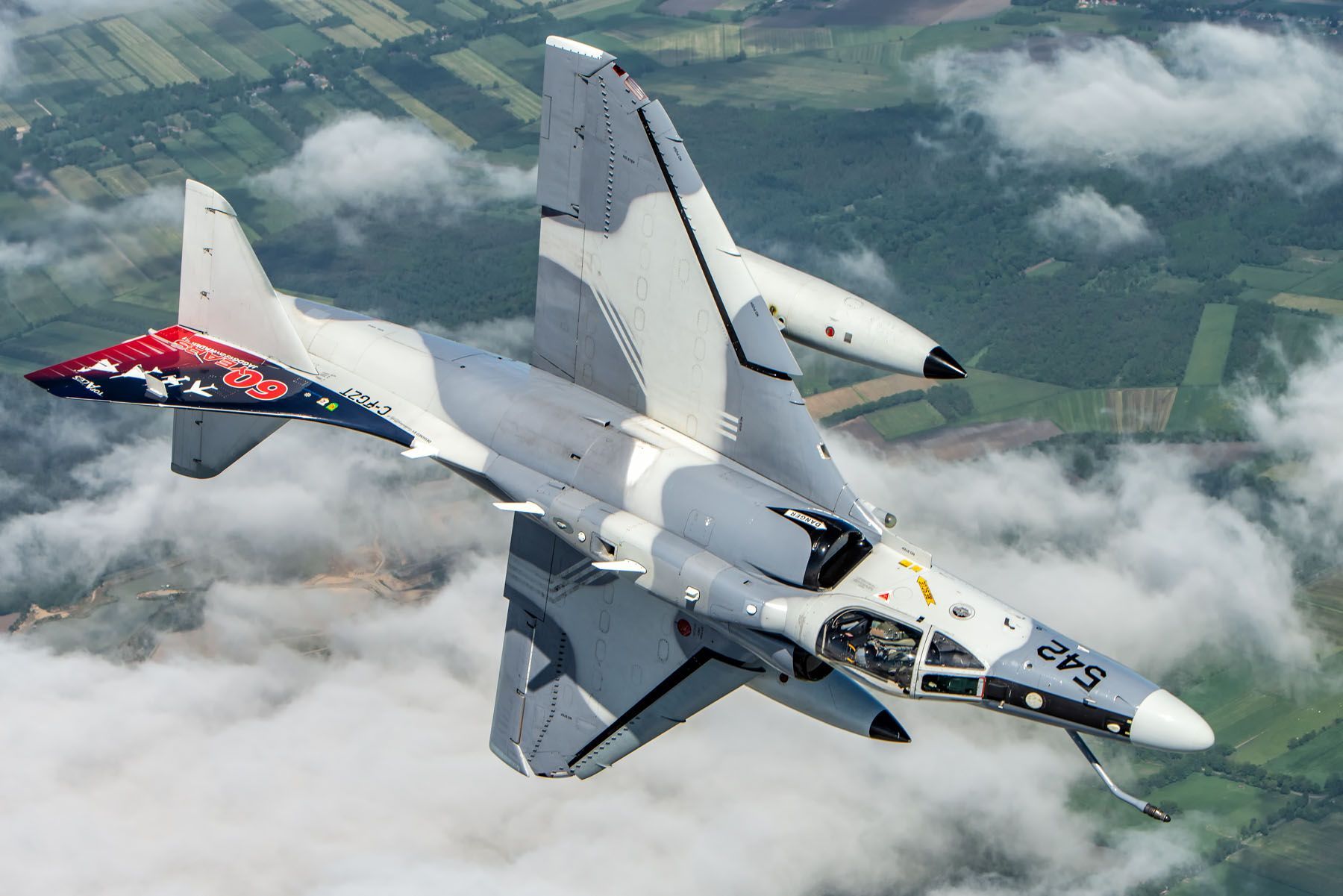
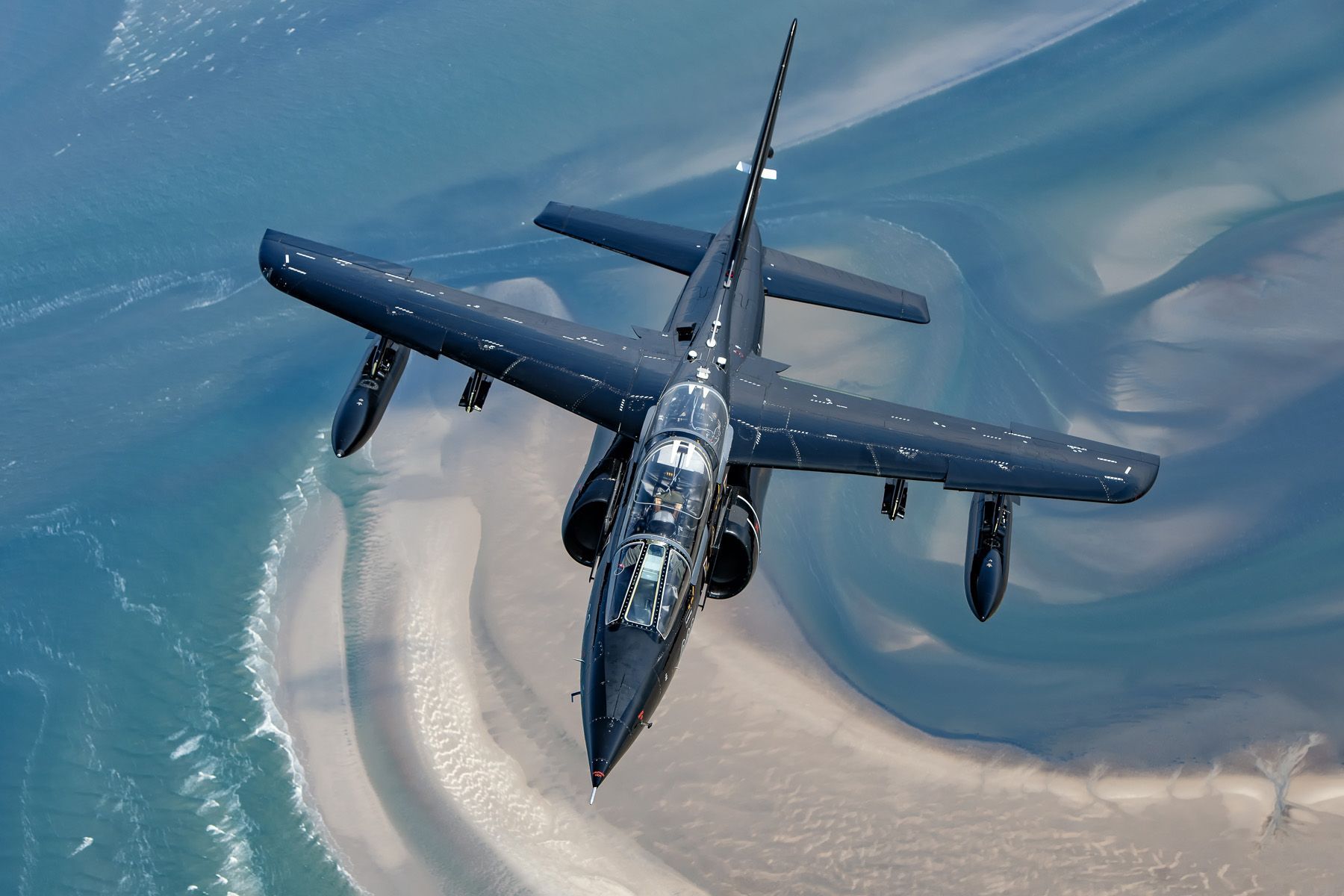
New base
Top Aces’s main operating base in Germany is Wittmund. This air base also hosts the Taktisches Luftwaffengeschwader 71 ‘Richthofen’ that operates the Eurofighter. The nearby North Sea as well as several Bundeswehr training locations in northwestern Germany enable minimal transit times, to get the most out of a training mission.
Due to an extensive reconstruction, Wittmund was closed early 2022 for no less than three years. Fortunately, a temporary location was offered nearby. At a corner of Nordholz Naval Air Station, home of German Naval Aviation, temporary office buildings and additional hangar space was set up for the relocation.
Meanwhile, Top Aces opened a new base at Laage in 2023, conveniently colocated with the German Air Force’s Eurofighter training centre. From now on, missions on their behalf can be planned and executed more efficiently. A small number of Alpha Jets will equip this detachment. An additional aircraft was flown over from Canada in the summer of 2023 to expand the German-based fleet.
The current contract with the Bundeswehr runs until the end of 2025. However, it can be expected that it will again be renewed, as Wittmund will have new facilities to host Top Aces after the base refurbishment is completed. And, it’s not only the Bundeswehr that appreciate Top Aces’ services. The company also provide Advanced Adversary Air (ADAIR) training to the US Air Force in Europe.
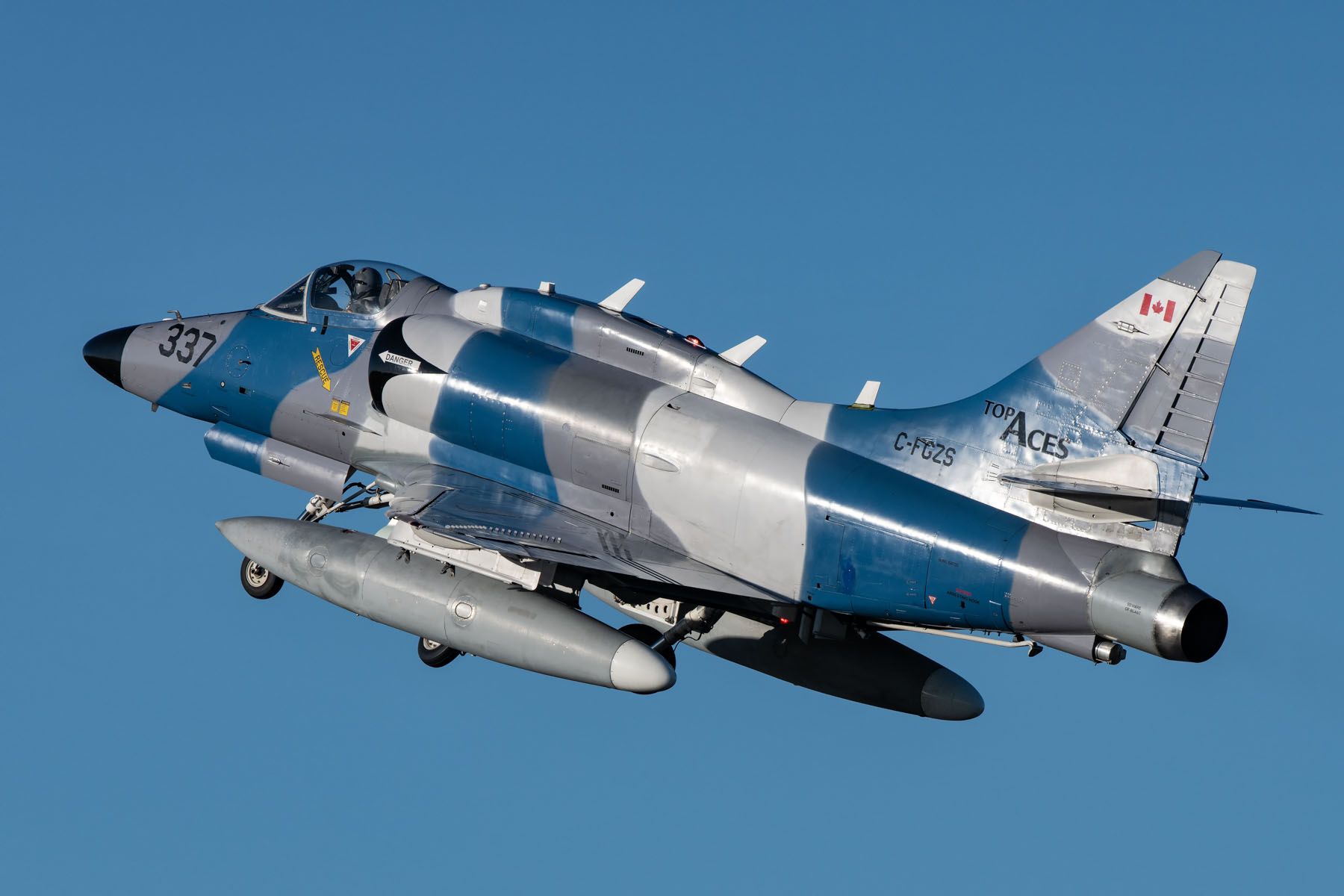
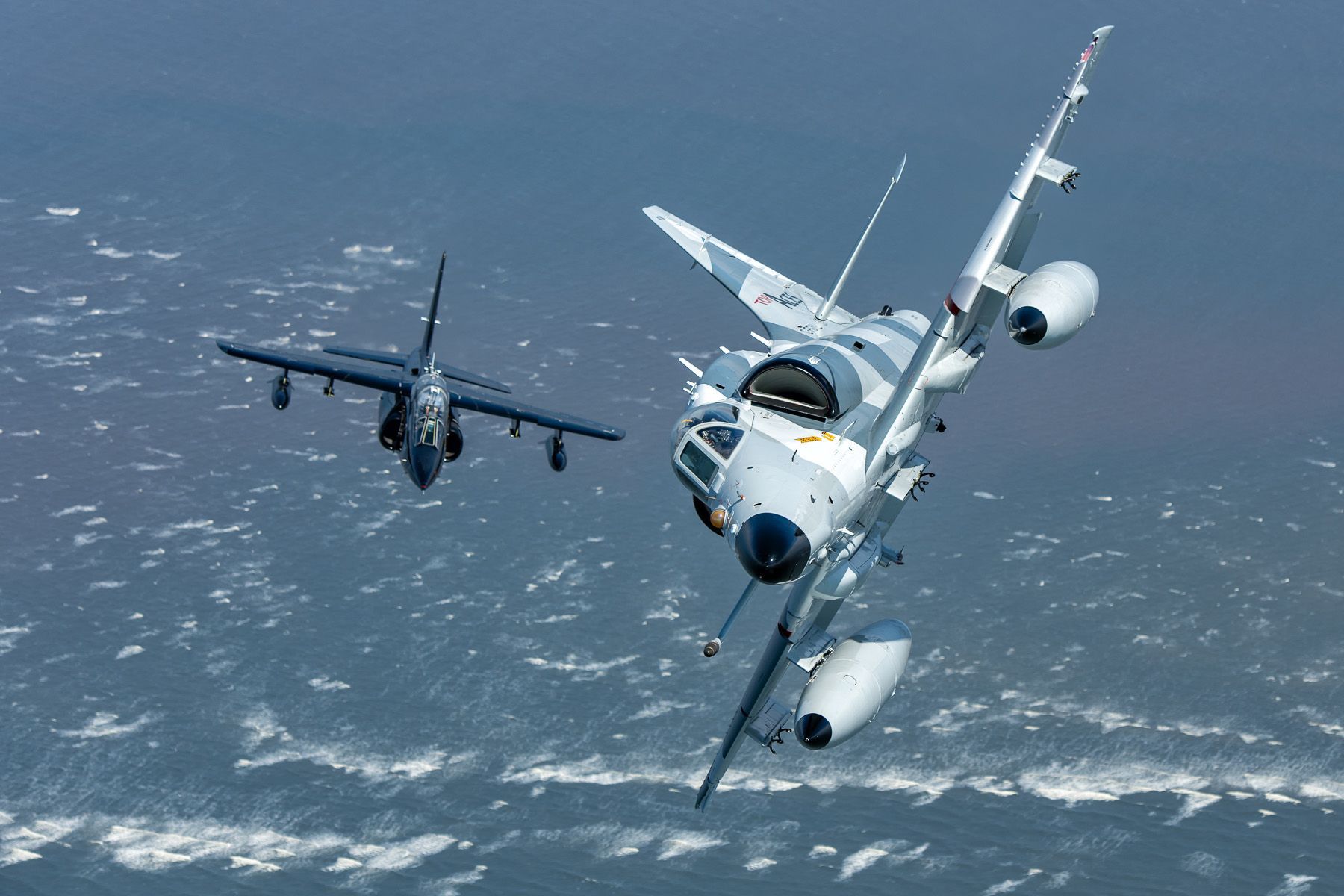
Fifth-generation
Stateside, the current contract with the US Air Force is for F-16s to train the fifth-generation customers within the US, while the company sees a growing demand signal to increase the quantity of advanced ADAIR for the various US military branches. For the future, Top Aces looks forward to provide ADAIR training in the US during large force exercises, not only to US forces but also to their allies and coalition forces. Top Aces F-16s might also be deployed abroad for such training, however this will be at the discretion and direction of the US government as certain limitations apply.
So, nearing 25 years following its establishment, Top Aces has set a benchmark in offering advanced training services to allied partners. Over 100,000 operational training hours have been flown safely, a milestone reached on 31 May 2022. The three founding Canadian pilots can proudly look back at what started as a bold adventure. ■
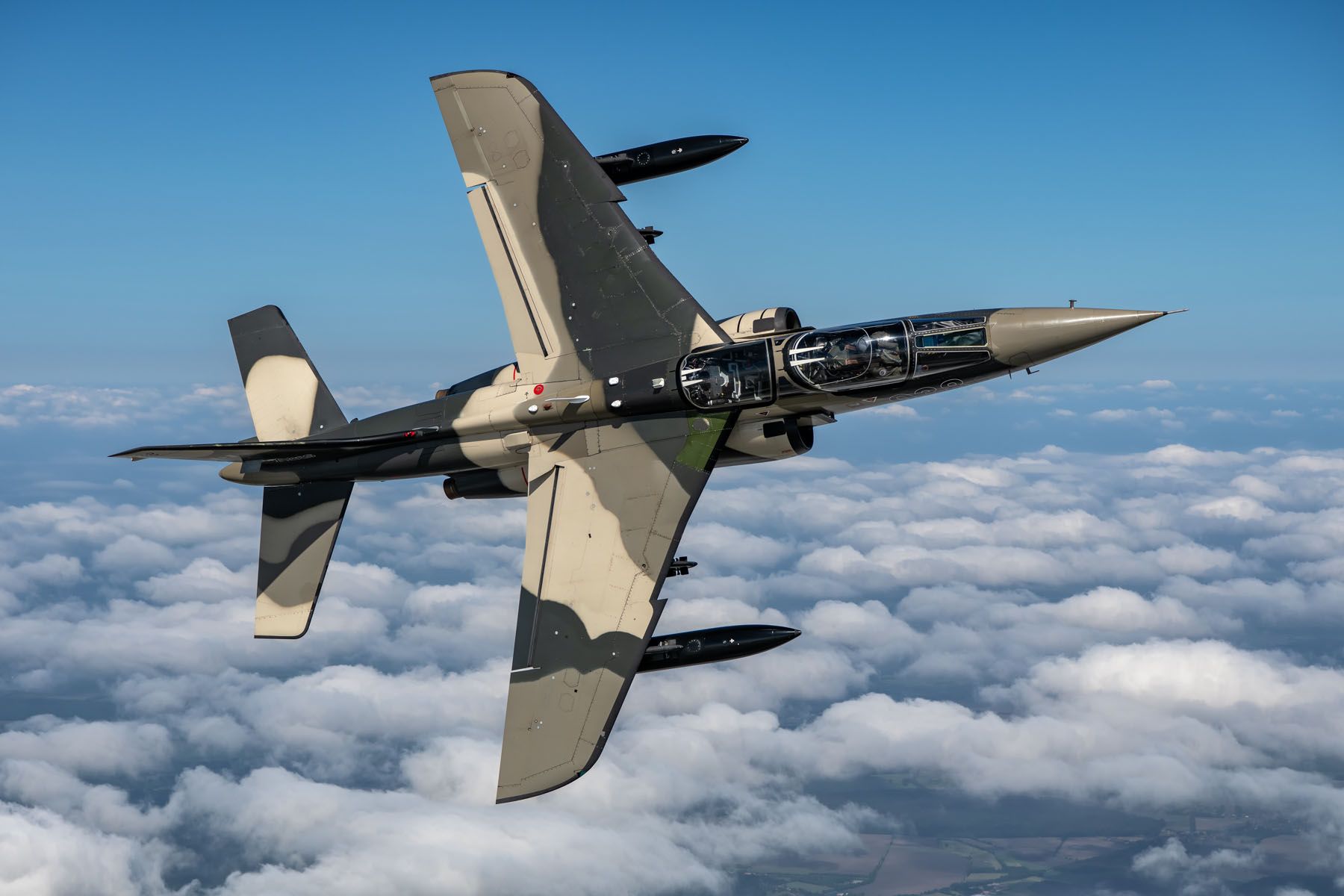
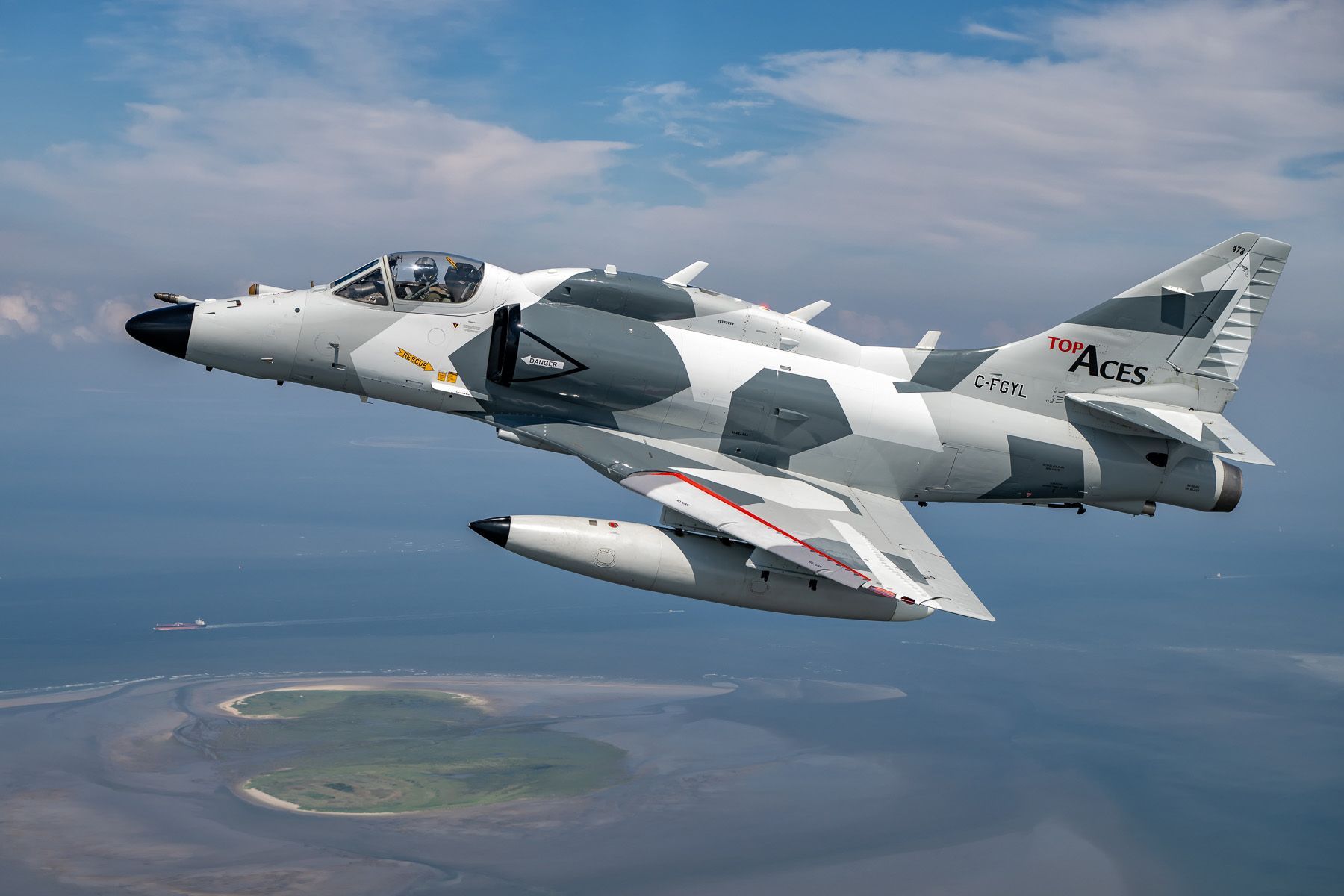
The author would like to thank Top Aces' communication manager Erin Black, as well as Stefan Müller and the rest of the German-based Top Aces crew for their kind assistance to this report.